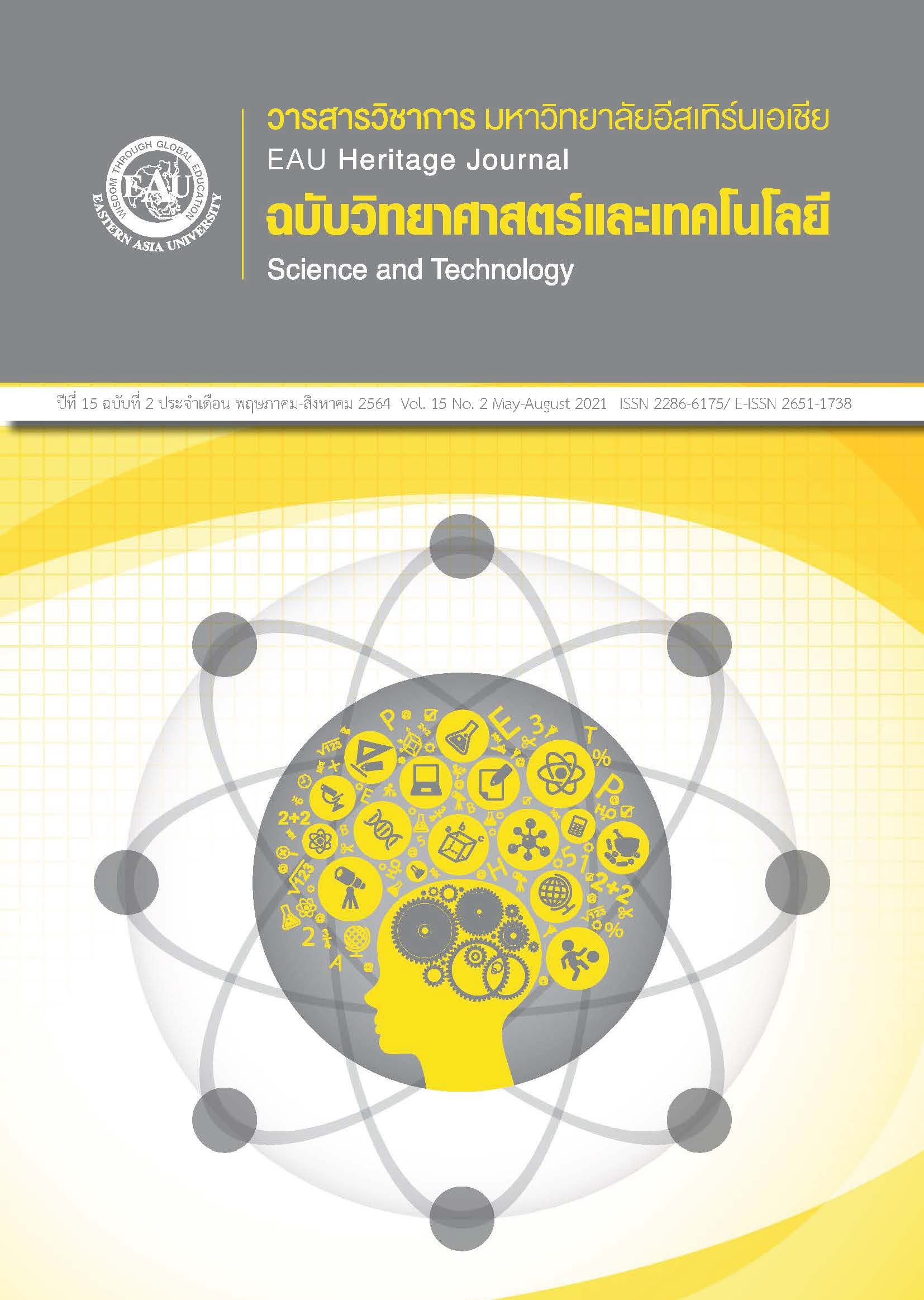ปัจจัยที่มีอิทธิพลกับพฤติกรรมการรับประทานยาในผู้ป่วยความดันโลหิตสูง
คำสำคัญ:
ความดันโลหิตสูง, พฤติกรรมการรับประทานยาบทคัดย่อ
การศึกษาเชิงสำรวจแบบภาคตัดขวางครั้งนี้ มีวัตถุประสงค์เพื่อศึกษาความสัมพันธ์ระหว่างปัจจัยด้านคุณลักษณะส่วนบุคคลและพฤติกรรมการรับประทานยารักษาความดันโลหิตสูงในผู้ป่วยโรคความดันโลหิตสูง และเพื่อวิเคราะห์อิทธิพลของปัจจัยด้านการรับรู้ของบุคคล ได้แก่ การรับรู้ความรุนแรงของโรค การรับรู้ประโยชน์ และการรับรู้อุปสรรคต่อพฤติกรรมการรับประทานยาในผู้ป่วยโรคความดันโลหิตสูง กลุ่มตัวอย่าง คือ ผู้ป่วยโรคความดันโลหิตสูงตามทะเบียนผู้ป่วยโรคความดันโลหิตสูงที่มารับบริการในโรงพยาบาลศาลายา จังหวัดนครปฐม จำนวน 200 คน โดยการใช้วิธีสุ่มตัวอย่างแบบง่าย (simple random sampling) ด้วยวิธีจับฉลากจากบัญชีรายชื่อที่ผ่านการคัดเลือกตัวอย่างตามเกณฑ์ เก็บรวบรวมข้อมูลโดยการใช้แบบสอบถาม ซึ่งมีค่าดัชนีความสอดคล้องอยู่ระหว่าง 0.67-1.00 และมีค่าสัมประสิทธิ์แอลฟาของครอนบาคอยู่ระหว่าง 0.78-0.95 วิเคราะห์ข้อมูลโดยการแจกแจงความถี่ ร้อยละ ค่าเฉลี่ย ส่วนเบี่ยงเบนมาตรฐาน ค่าสถิติไคสแควร์ และสถิติการวิเคราะห์ถดถอยเชิงพหุคูณ ผลการวิจัยพบว่า (1) ปัจจัยด้าน อายุ ระดับการศึกษา และรายได้ มีความสัมพันธ์กับพฤติกรรมการรับประทานยารักษาความดันโลหิตสูงอย่างมีนัยสำคัญที่ .05 (2) การรับรู้ความรุนแรงของโรค การรับรู้ประโยชน์ และการรับรู้อุปสรรคต่อพฤติกรรมการรับประทานยาในผู้ป่วยโรคความดันโลหิตสูง มีอิทธิพลต่อพฤติกรรมการรับประทานยารักษาความดันโลหิตสูงอย่างมีนัยสำคัญทางสถิติที่ .01 และสามารถทำนายอิทธิพลของปัจจัยร่วมกันได้ร้อยละ 97.60 โรงพยาบาลและผู้ที่เกี่ยวข้องควรมีการวางแผนการจัดกิจกรรมกลุ่มเพื่อนผู้ป่วยโรคความดันโลหิตสูง เพื่อแลกเปลี่ยนเรียนรู้และเสริมแรงในการกระทำพฤติกรรมการจัดการตนเอง เนื่องจากปัจจัยที่ส่งผลต่อโรค ความดันโลหิตสูงมิได้มีเพียงปัจจัยพฤติกรรมการรับประทานยาเท่านั้น หากแต่มีปัจจัยอื่น ๆ ร่วมด้วย จะช่วยให้ผู้ป่วยสามารถรักษาและควบคุมโรคความดันโลหิตสูงได้ดียิ่งขึ้น
เอกสารอ้างอิง
Becker, M. H. (1974). The health belief model and personal health behavior. Health Education Monographs, 2, 324-508. http://dx.doi.org/10.1177/109019817400200407
Best, J. (1981). Research in Education (4th ed). London: Prentice-Hall International.
Bureau of Non Communicable Diseases. (2006). Campaign Issues for Hypertension Day. Retrieved from http://www.thaincd.com/document/file/info/non-communicable-disease/61.pdf. (in Thai)
Chockalingam, A., Campbell, N. R., & Fodor, J. G. (2006). Worldwide epidemic of hypertension. The Canadian Journal of Cardiology, 22(7), 553–555. https://doi.org/10.1016/s0828-282x(06)70275-6
Chulawattaka, S. (2008). Relationship between knowledge and self-care behavior of hypertension patients in Sakon Nakhon Province. Journal of Public Health Isan Region, 22(5), 25-27. (in Thai)
Clark, L. T. (1991). Improving compliance and increasing control of hypertension: Needs of special hypertensive populations. American Heart Journal, 121(2 Pt 2), 664–669. https://doi.org/10.1016/0002-8703(91)90443-l
Hunsuwan, B., & Kanokthet, T. (2019). Effects of self-management programs on hypertensive patients in Phetlakorn District Health Promoting Hospital, Nongphai District, Phetchabun Province. EAU Heritage Journal Science and Technology, 13(2), 239-253. (in Thai)
Hoy, W. K., & Miskel, C. G. (2005). Educational administration: Theory, research, andpractice. (6th ed.). New York: McGraw-Hill.
Janz, N. K., & Becker, M. H. (1984). The health belief model: A decade later. Health Education Quarterly, 11(1), 1–47. https://doi.org/10.1177/109019818401100101
Khammak, P. Khummak, S., & Kaewmunee, M. (2015). Factors related to self-watching behavior of hypertensive patients in Khlong Ri Sub-district, Sathing Phra District, Songkhla Province. Journal of the Southern Region College of Nursing and Public Health Network, 2(3), 74-91. (in Thai)
Kooariyakul, A., & Meesri, C. (2017). Knowledge and self-care behaviors of patients with hypertension at Tambon Pasao Health Promoting Hospital, Amphur Mueung Uttaradit Province. Boromarajonani College of Nursing Uttaradit Journal, 9(2), 28-40. (in Thai)
Kummak, S. (2016). Self-care behaviors among hypertension patients in Tambon Nanglao Health Promoting Hospital, Amphur Satingpha, Songkhla Province. Journal of the Southern Region College of Nursing and Public Health Network, 3(3), 153-169. (in Thai)
Lakeaw, A., & Charliekuea, T. (2017). Health literacy and factors related to medication among patients with hypertension Ban Piang Luang Subdistrict health promoting hospital, Chiang Mai Province. Journal of Graduate Studies Suan Sunandha Rajabhat University, 22(2), 635-649. (in Thai)
Lalun, P., Nangkurang, N., & Malarat. A. (2011). Self care behavior of patients high blood pressure who come to receive the medical outpatient department Somdet Medical Center Hospital Phra Thep Rattanathasuda Siam Princess Royal. Journal of Medicine and Health Sciences, 18(3), 160-169. (in Thai)
Leventhal, H., Brissette, I., & Leventhal, E. A. (2003). The common-sense model of self-regulation of health and illness. In L. D. Cameron & H. Leventhal (Eds.), The self-regulation of health and illness behaviour (p. 42–65). London: Routledge & CRC Press.
Prakobchai, S., Kusuma Na Ayuthya, S., & Wattanakitrileart, D. (2014). Factors influencing medication-taking behavior of hypertensive patients. Journal of Nursing Science, 32(4), 43-51. (in Thai)
Ritthirong, P. (2011). Self-care behavior of hypertensive patients used to collect data in patients with hypertension: Hypertension at the clinic in chronic disease Ban Don Kha Health Promoting Hospital, Ton Hong Sub-district, Phrom Khiri District, Nakhon Si Thammarat Province. Retrieved from http://www.promkiri.go.th/detail/doc. (in Thai)
Rosenstock, I. M., Strecher, V. J., & Becker, M. H. (1988). Social learning theory and the Health Belief Model. Health Education & Behavior, 15(2), 175–183. https://doi.org/10.1177/109019818801500203
Rungsawang, S. (2015). Factors related to polypharmacy medication adherence among older persons with chronic iIIness. Journal of Medical Technology, Region 11, 29(2), 195-202. (in Thai)
Salaya Hospital. (2560). Summary of 2017 annual medical records of Salaya Hospital. Nakhon Pathom: Salaya Hospital. (in Thai)
Samruayruen, K., & Sribenchamas, N. (2019). Effectiveness of medication using literacy program on medication use behaviors among hypertensive patients in Pho Sai Ngam Health Promoting Hospital, Bueng Na Rang district, Phichit Province. EAU Heritage Journal Science and Technology, 13(2), 297-306. (in Thai)
Satipraset, A., Leelukkanaveera, Y., & Homsin, P. (2015). Effects of coaching on health behaviors and blood pressure of patients with uncontrolled essential hypertension. Journal of Nusing and Education, 8(3), 33-51. (in Thai)
Seijak, P. Therawiwat, M. Imamee, N., & Pradipasen, M. (2013). Factors related to-self-management behaviors on blood pressure control of persons with hypertension. Journal of health Edcation, 36(124), 17-29. (in Thai)
Sujamnong, S., Therawiwat, M., & Imamee, N. (2013). Factors related to self-management of hypertensive patients, Taladkwan District health promoting hospital, Nontaburi Province. Journal of Boromarajonani College of Nursing, Bangkok, 29(2), 20-30. (in Thai)
Thongsilp, R. (2011). Effectiveness of implementing clinical practice guidelines for prompting medication adherence among older persons with hypertension Wiang Papao Hospital Chiang Rai Province (Master’s thesis). Chiang Mai University. Chiang Mai. (in Thai).
Thongyuan, J. (2015). Factors related to health behavioral among hypertensive patients at Surattani Hospital. Region 11 Medical Journal, 29(2), 195-202. (in Thai)
Unarmromlert, T (2006) Educational research tools: Building and development. Nakhon Pathom: Silpakorn University. (in Thai)
Wolwat, K., Suwan, P., Chanthamolee, S., & Srisuphanunt, M. (2019). Development of the Elderly Care Model for Hypertension by Community, Wangwiset District, Trang. EAU Heritage Journal Science and Technology, 13(1), 210-221. (in Thai)
World Health Organization. (2012). Adherence to long-term therapies evidence for action. Retrieved from http://www.whqlibdoc.who.int/publications/2012/9241545992.pdf
Wungthanakorn, S., Phatidumrongkul, C., & Khomchan, P. (2008). Factors affecting medication taking behaviors in hypertensive patients. Songklanagarind Medical Journal, 26(6), 539-547. (in Thai)







